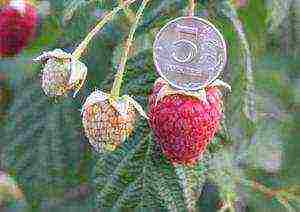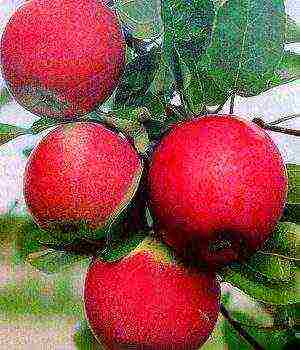Content
Lavender (Lavandula) - a representative of the family of the lacustrine, in nature there are more than 30 species.
Of these, only two are grown as cultivated plants:
- French, or broadleaf, lover of warm climates;
- English, or narrow-leaved, grows well in more temperate conditions.
It is an evergreen shrub. Its shoots grow up to 60 cm in height. The leaves are opposite, pubescent, with a soft silvery shade. The flowers are blue or lilac-blue and have an exquisite aroma.
The plant is of interest not only as a highly decorative shrub or as a supplier of essential oils for the needs of perfumers or pharmacists. This is an excellent honey plant with healing properties.
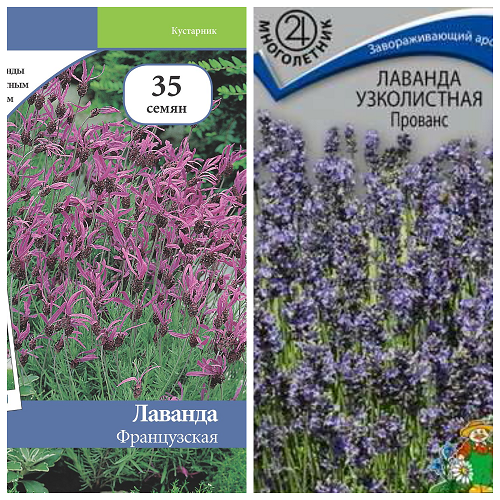
Types and varieties
French lavender, a native of the southwestern regions of Europe, is distinguished by a pronounced aroma, a varied color range of inflorescences: various tones of purple, pink, lilac, green, burgundy, white. It blooms in the second half of spring, and after a break starting in July, it re-fills the garden with fragrance, starting in mid-August.
Traditionally, lavender is cultivated in garden plantings in warm regions, since its cold resistance is low, - Crimea, subtropical regions of the Krasnodar Territory.
The following varieties of French lavender are popular among gardeners:
- Yellow Vale - her flowers are dark purple, crimson bracts;
- Regal Splendur;
- Rocky Road is a new generation cultivar that blooms in July with large purple-blue flowers;
- Tiara - blue flowers with cream bracts;
- Helmsday - lilac-burgundy inflorescences.
Hybrid, it is dutch lavender - a line of varieties of high decorativeness, bred on the basis of the English cultivar. It is characterized by tall flexible peduncles and narrow leaves with a silvery tint. Blooms in July.
The following varieties are popular among gardeners:
- Alba is the owner of white inflorescences;
- Arabian Knight, with dark blue or purple flowers;
- Sawyers - light purple;
- Grosso is a large-flowered cultivar;
- Richard Gray is notable for its compactness.
Large selection in the online store of seeds and seedlings:
Jagged lavender, which has characteristic carved leaves and large fragrant flowers, prefers only the mild Mediterranean climate. In our latitudes, it is grown indoors.
English, she narrow-leaved lavender differs from its sisters in winter hardiness. External signs: leaves are bright silvery-green, small blue flowers with lilac shades. Multiple shoots have a whitish edge, because of which the bush seems to be painted in a bluish color.
The species in its natural form grows in the Kuban (Krasnodar Territory), and it is he who is the basis of hybrids adapted for cultivation in many regions of the Russian Federation.

In European countries, the following varieties are most widespread:
- Lavender Munsted - compact, with classic flowers, the variety grows well in open places, because it is not afraid of the wind;
- variety series Hidcote, widely used as a hedge;
- variety series Ellagance, equally suitable for open field and container cultivation;
- Rosea, which grows up to 40 cm in height, its inflorescences are painted in a delicate pink color;
- Alba with pure white flowers.
Lavender varieties are successfully grown on the territory of Russia domestic selection, many of which are zoned for most regions of the country:
- Record;
- Southerner;
- Steppe;
- Voznesenskaya 34
- Lublinskaya;
- Crimean woman;
- Isis;
- Delight.
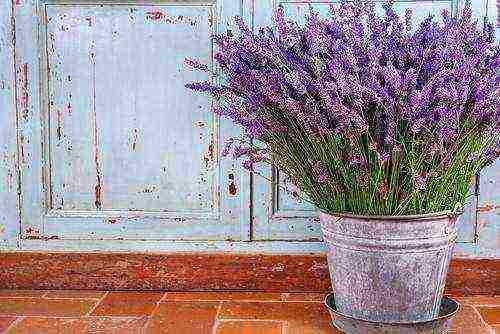
Growing lavender in the garden, we have not only a beautifully flowering plant that fits perfectly into any design solution - the design of rockeries, borders or hedges.
We also get a wonderful helper:
- it is a wonderful honey plant that attracts bees;
- planted along the beds, it turns out to be an excellent defender against many pests;
- flowers and leaves have medicinal properties, are widely used in aromatherapy;
- some types are used in cooking.
Lavender is an unpretentious and incredibly sophisticated shrub, found in its natural environment most often in the mountainous areas of the Mediterranean.

The plant has a number of positive qualities: delicate beauty, amazing fragrance, useful properties. Caring for lavender does not cause much trouble, and there are a lot of advantages from owning this plant.

Growing lavender
Growing lavender is not particularly difficult, but it is worthwhile to carefully approach the choice of variety, planting material, correctly sow from seeds or plant seedlings, and take proper care.

Choosing the right variety
Gardeners will have to choose from over 20 plant species. The following are considered especially in demand:
- English narrow-leaved;
- French broadleaf;
- toothed.
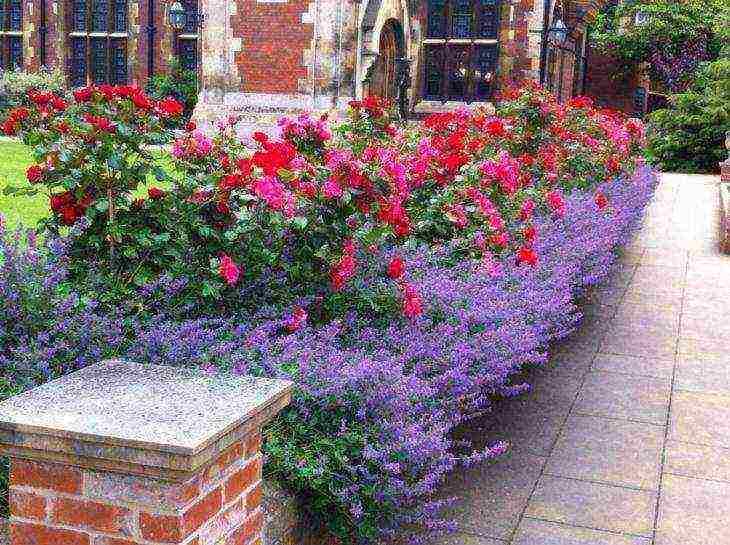
The English version is most suitable for growing in Russia. The plant calmly tolerates a temperature drop down to -25 degrees. Different varieties of this species differ in the height of the bush (from 15 to 60 cm). The plant is considered medicinal.
The French version of the shrub is not capable of wintering, therefore, lavender is not cultivated in the open field in the middle lane. This plant is most often planted in pots, which are brought into a shelter when the cold season comes (the temperature should not drop below -10 degrees).
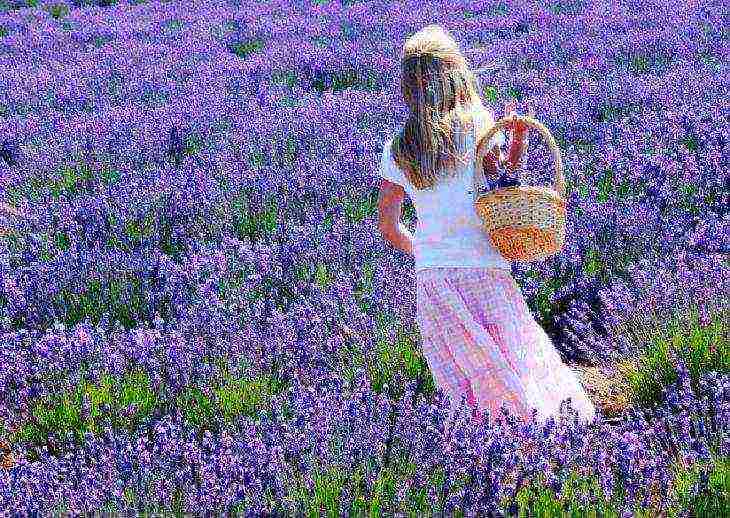
French lavender is close to decorative, has a charming aroma, presentable appearance.
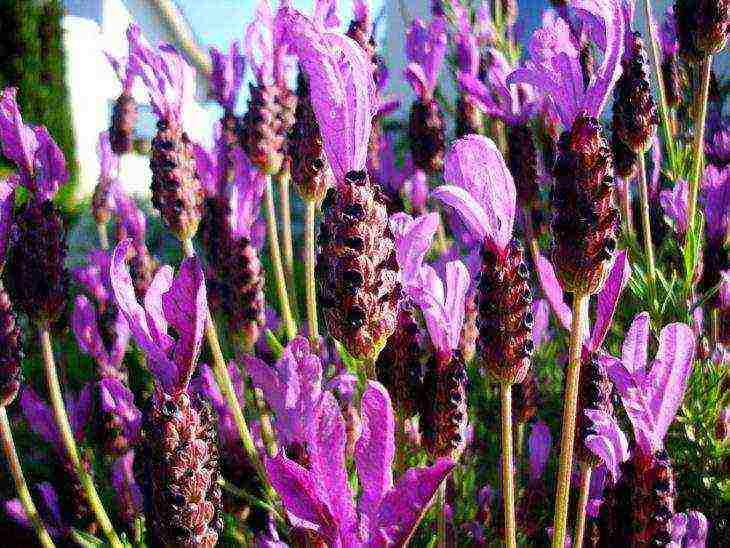
The serrated version does not tolerate low temperatures at all, therefore it is cultivated exclusively in warm climates, lavender is grown at home. The view is extremely decorative.
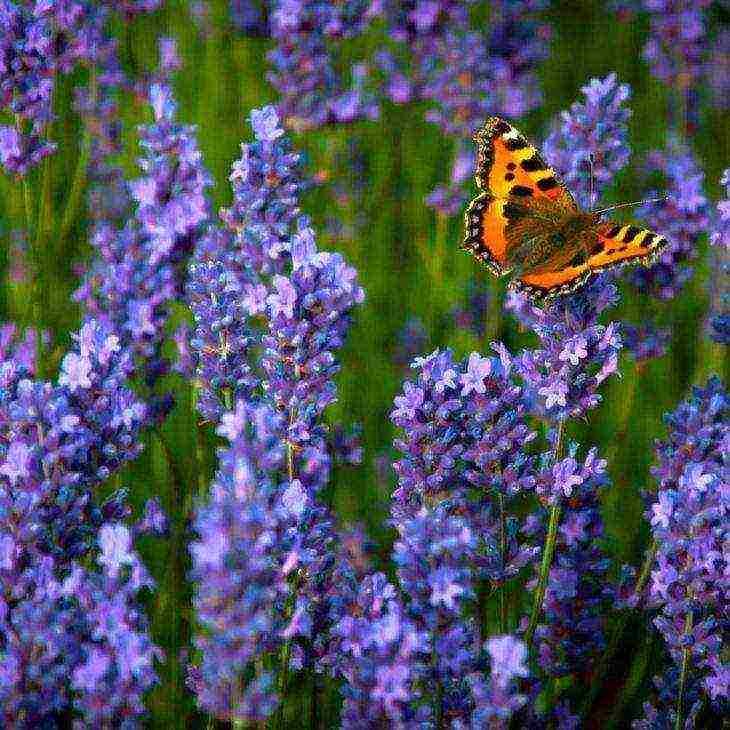
The bush has silvery patterned foliage, incomparable flowers of various varieties of purple. Viewing a photo of lavender will give a complete picture of the beauty of this plant.

What is the preferred planting material?
The seeds of the plant ripen in autumn. It is more expedient to make a purchase not earlier than September, it is more attentive to the packaging period. Seeds are capable of maintaining germination for a long time with proper organization of wintering.
Seeds are stored in paper packaging, the temperature should vary from 12 to 18 degrees Celsius. The rest period before planting should not exceed 2 years, otherwise stratification will be required.
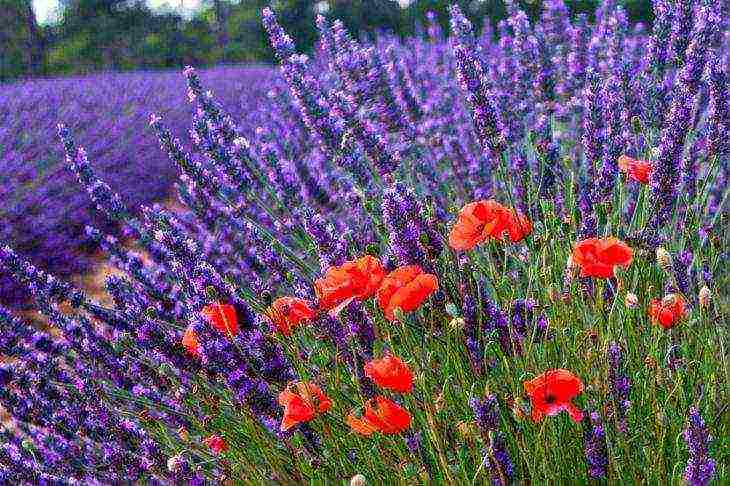
When buying ready-made seedlings, you should pay attention to the quality of the appearance. Plants should have healthy roots with no signs of damage or pest infestation. Not the least important is the correspondence of plants to the time of planting according to local climatic conditions.

Sowing and planting
The plant does not like transplanting, so it is better to think over the placement well in advance. The natural habitat of the bush is the mountain slopes with a rocky structure, unfertile soil.
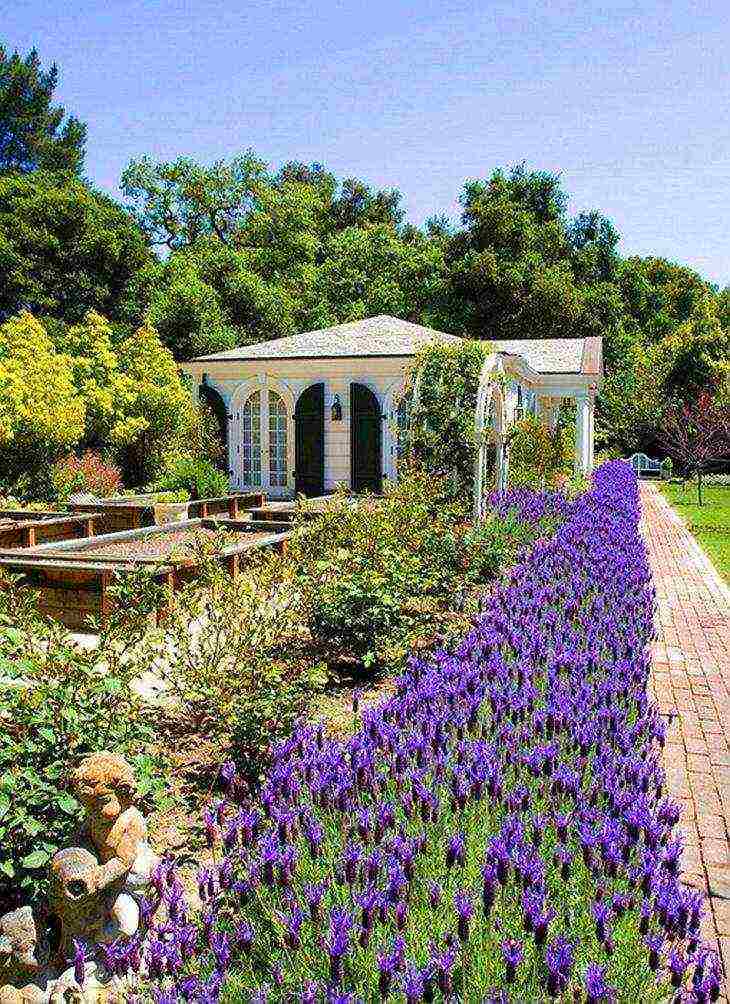
The plant needs to create similar growing conditions. The best location is south, southwest. Lowlands prone to waterlogging will destroy the plant.
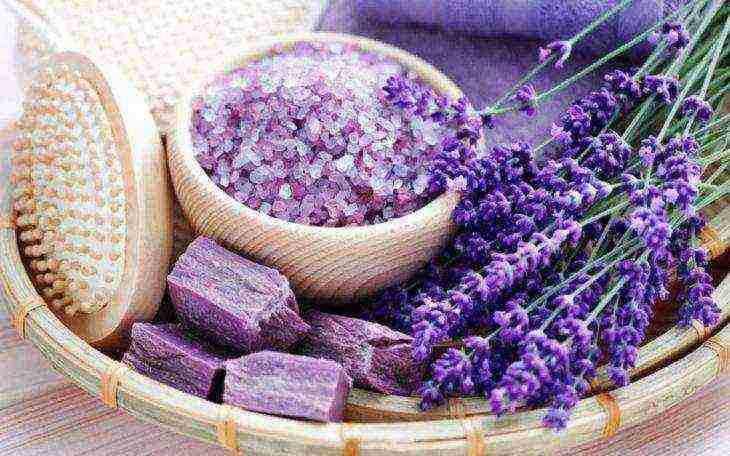
Excessive shading will affect the abundance, beauty of flowering.
Heavy clay soil is pre-prepared, lightening components are added: sand, lime, compost. If there is a close proximity of groundwater, provide adequate drainage.
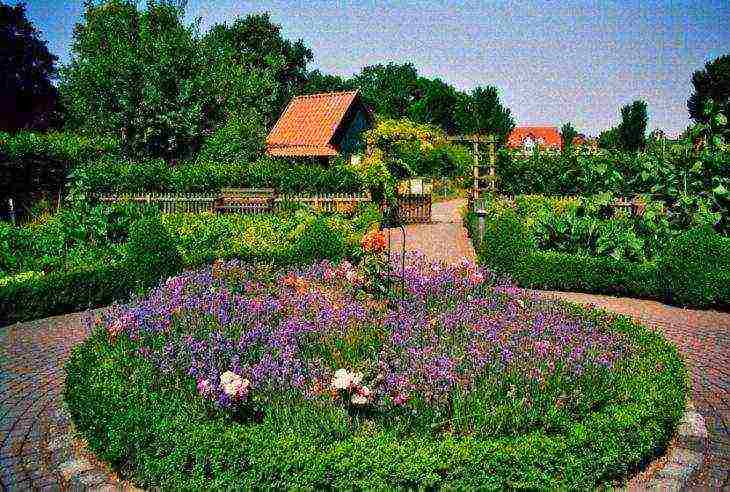
Lavender seeds are sown in October if they are to be grown outdoors. Seedlings - only in spring, when frosts have passed. In warm climates, it is permissible to plant seedlings when the summer heat recedes - from late August to October.
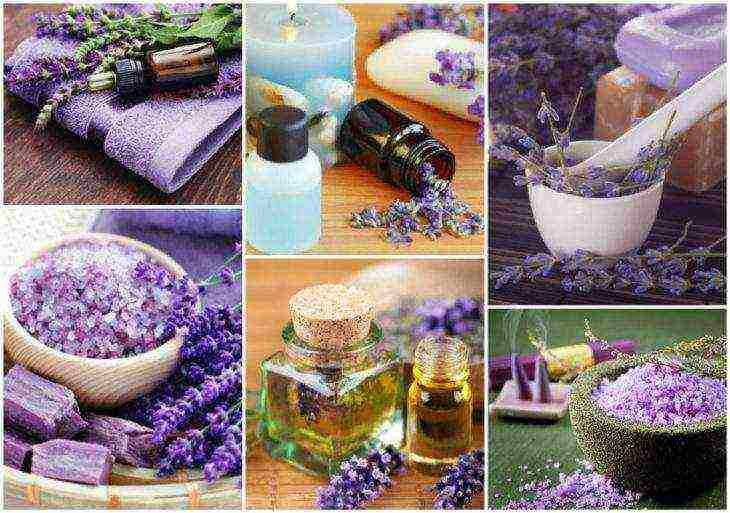
Seed lavender is grown by stratification. The easiest option is propagation by cuttings. In the middle lane, it is carried out in the middle of summer. In the spring, layering can be made for breeding. In autumn, at a moderate temperature, the bush can be prepared for division.
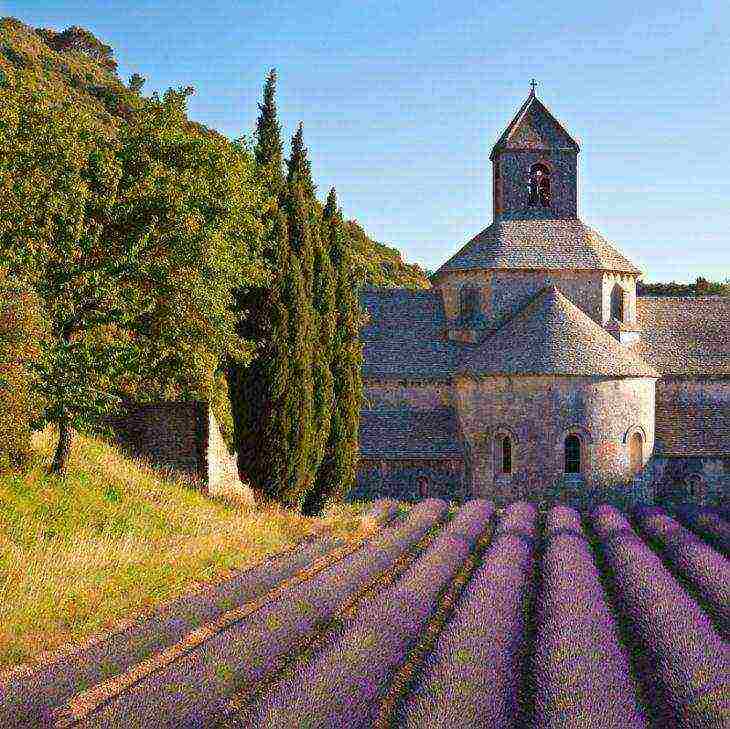
Care procedure
Planting and grooming lavender doesn't require much attention. The plant requires:
- watering;
- top dressing;
- pruning;
- provision of wintering.

Lavender does not require frequent watering, so it is produced as the soil dries up. They irrigate the bush with a stream directed to the roots, try not to pour lavender flowers on the green mass.
Waterlogging contributes to the rapid decay of the root mass, systematic flooding leads to the death of the plant.
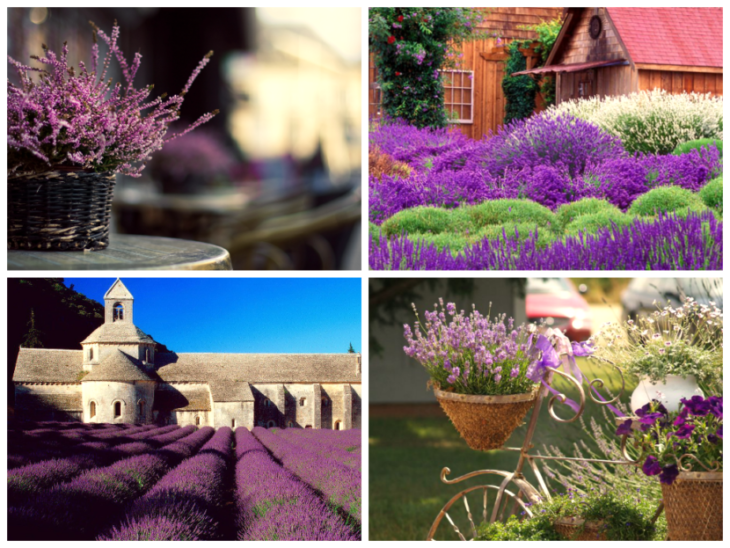
To maintain its decorative appearance, lavender needs to be pruned. This operation is carried out in the fall, after wintering, old inflorescences are removed. As a crown formation, a third of the green mass is cut off.

In the spring, when the green mass is actively gaining, lavender should be fed with nitrogen fertilizer (urea, ammonium nitrate). In the second half of summer, it is no longer recommended to do this, since lavender will not have time to prepare for winter. The soil near the bush can only be covered with compost.
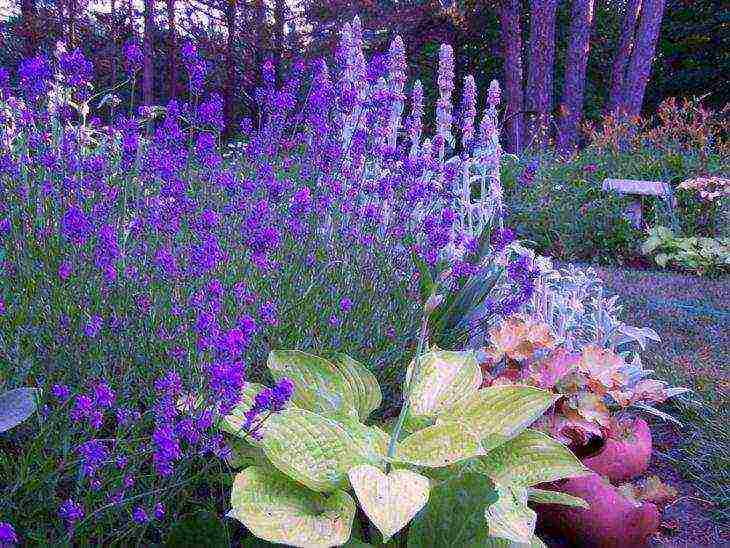
In winter, lavender needs shelter. Spruce branches are an excellent option. It is better to avoid the use of sawdust and dry foliage as a covering material, since these materials contribute to the preheating of the plant.
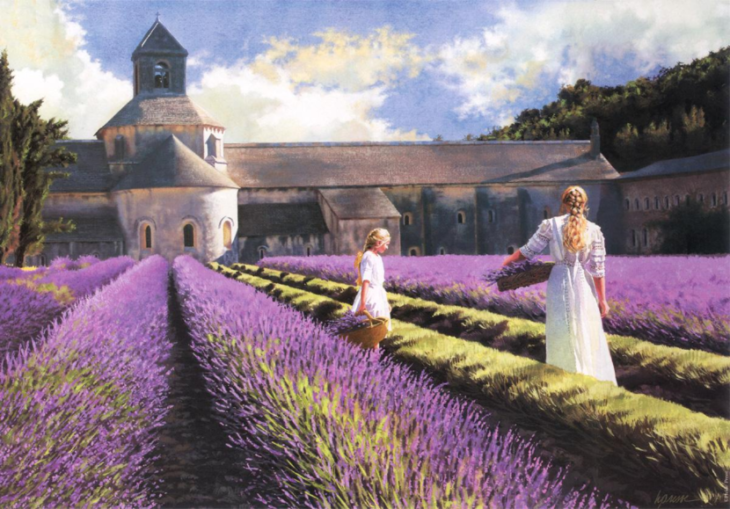
Having given preference to lavender, you will not have to regret it. The plant has a special charm, it is successfully combined with ornamental and medicinal plants. The bush has a unique beauty, the smell of lavender is mesmerizing.
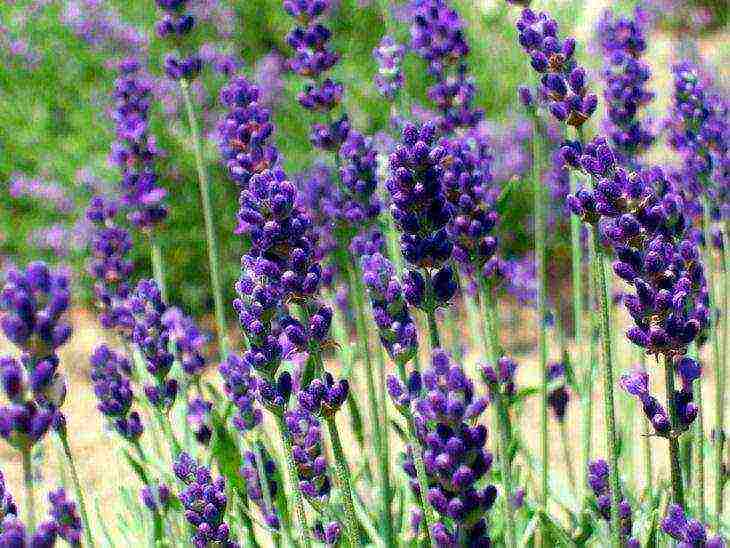
Photo of lavender
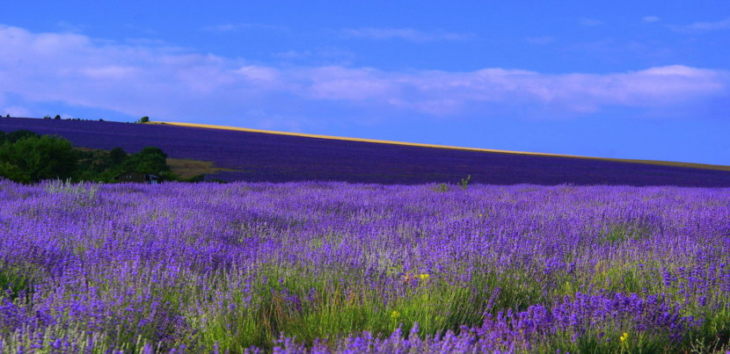
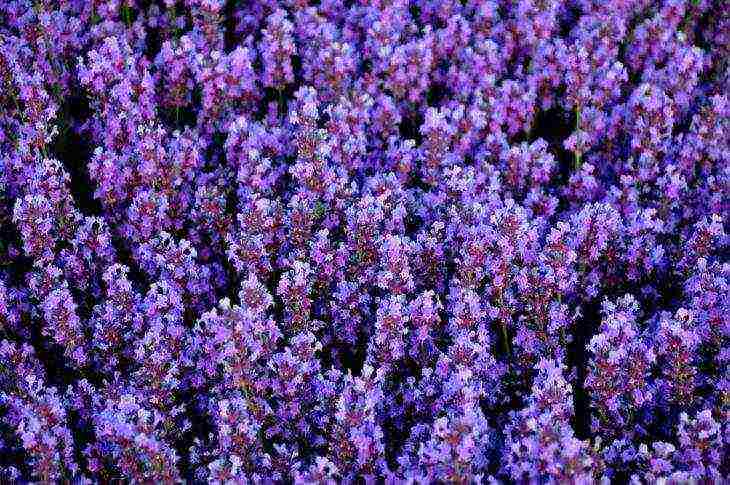
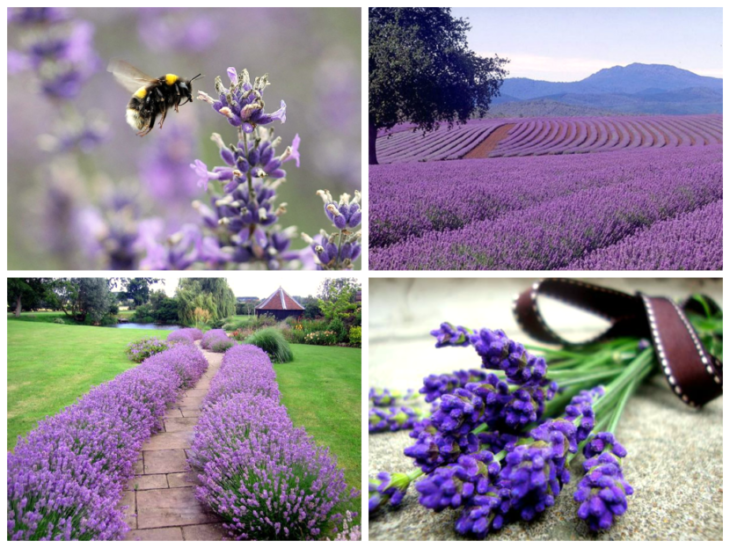


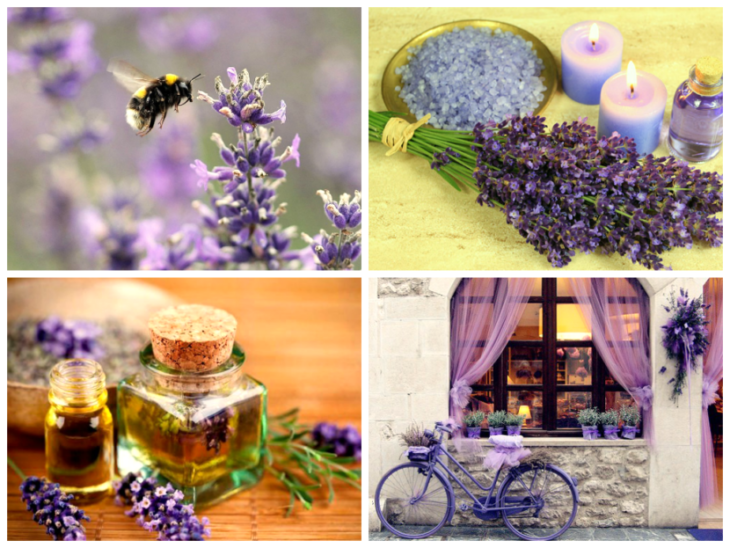

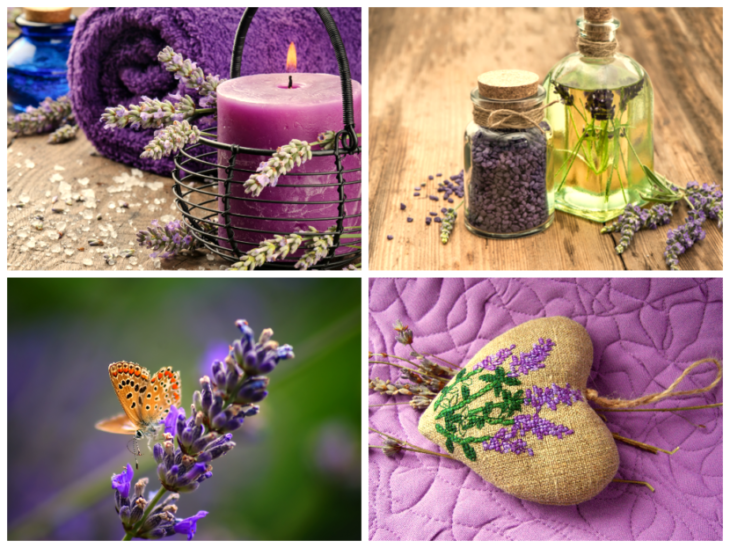
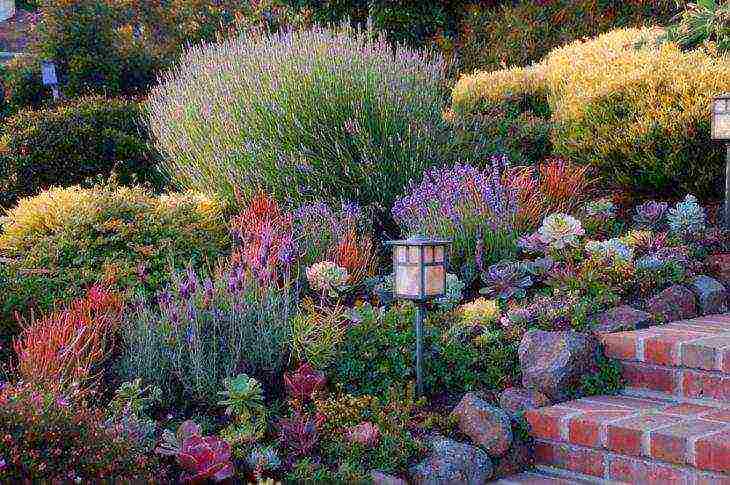
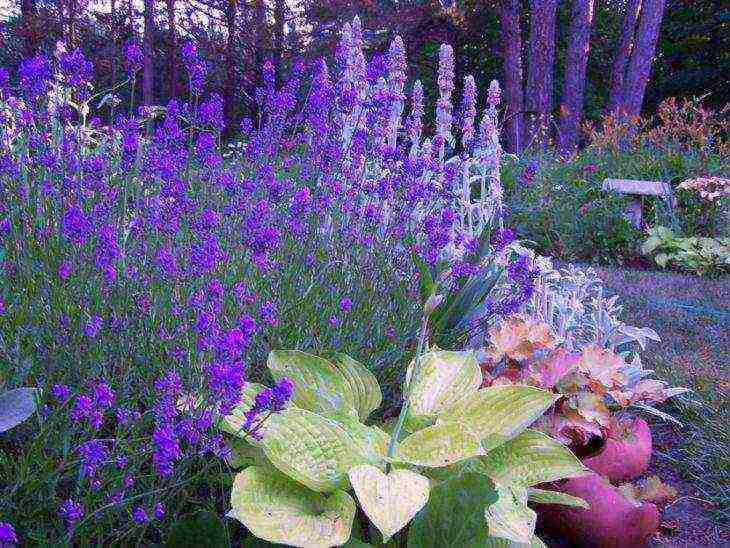
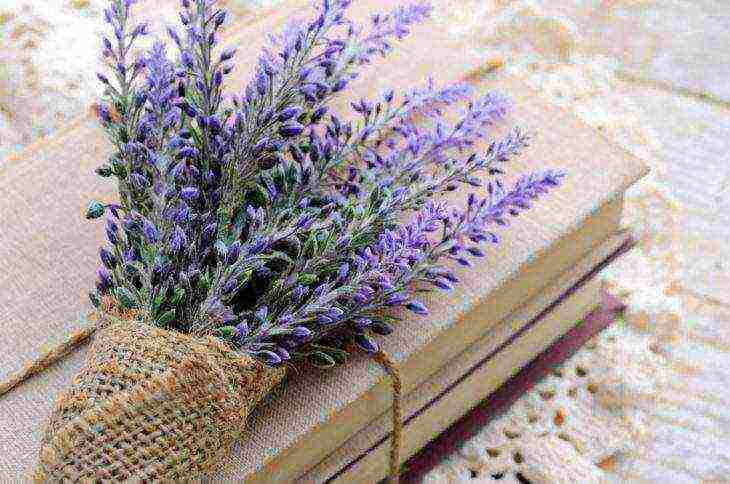
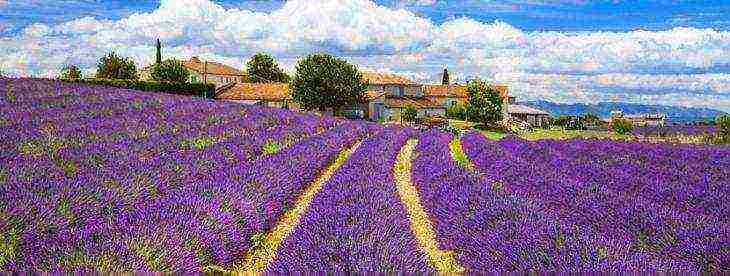
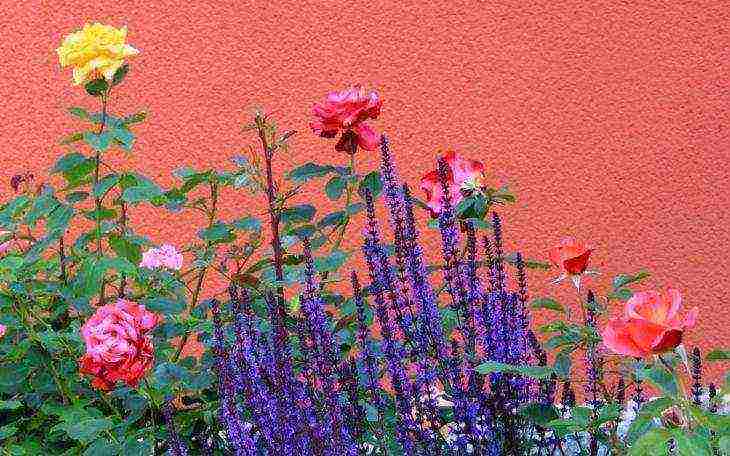
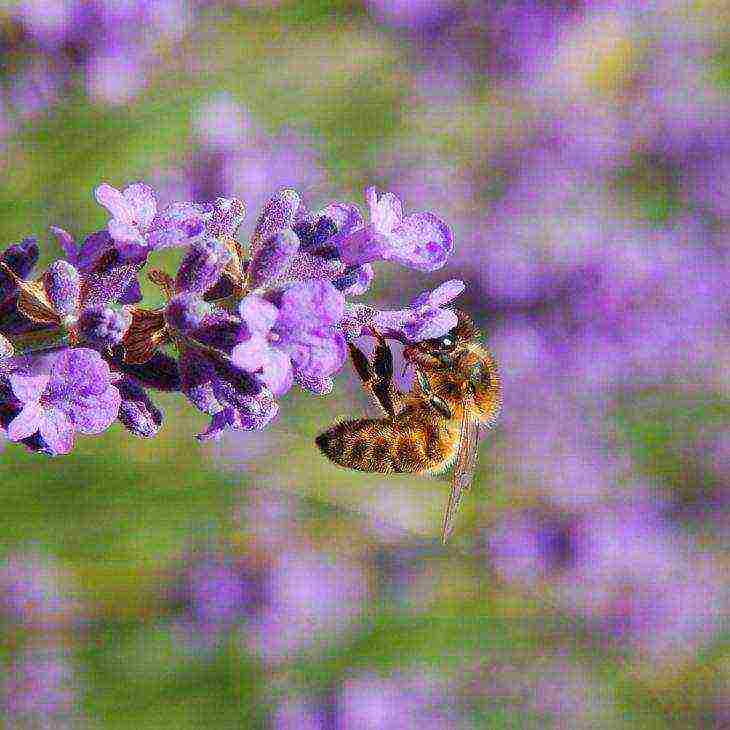

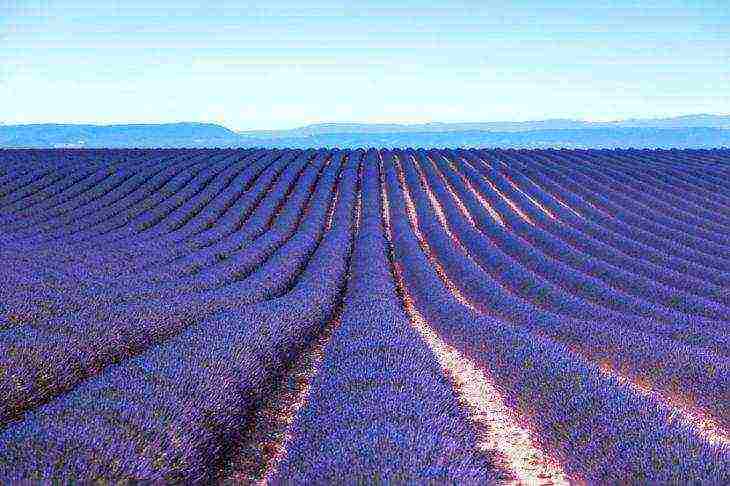

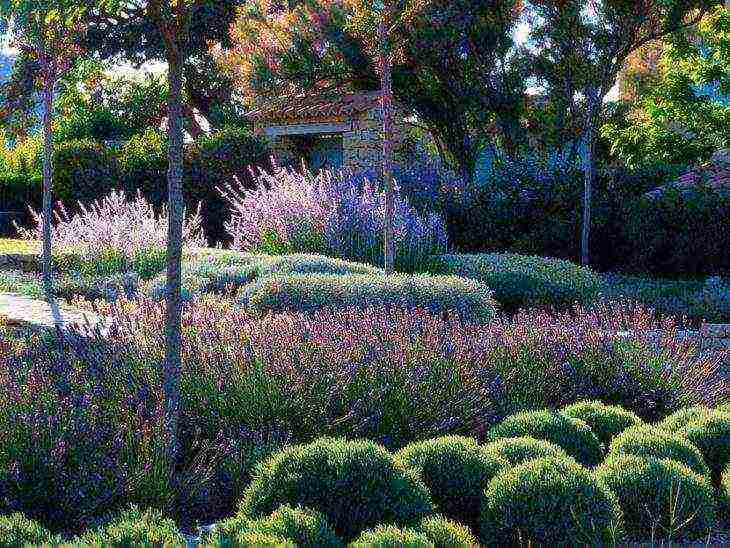

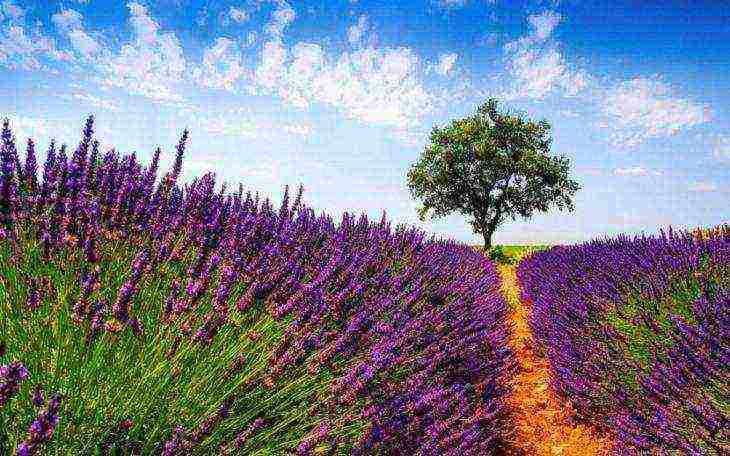


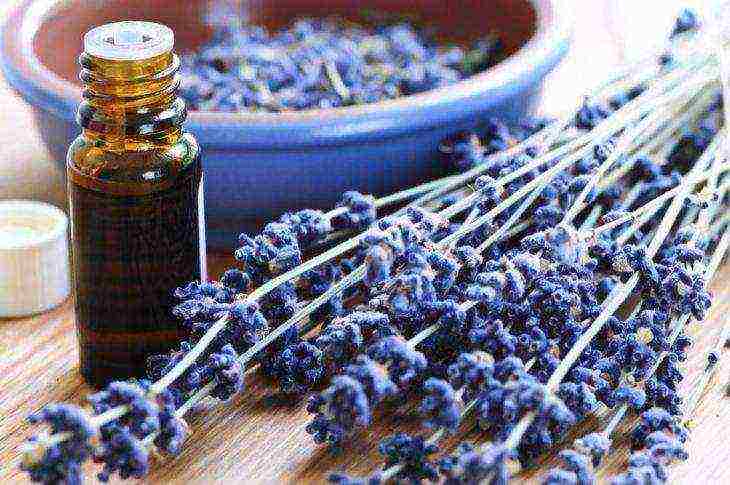
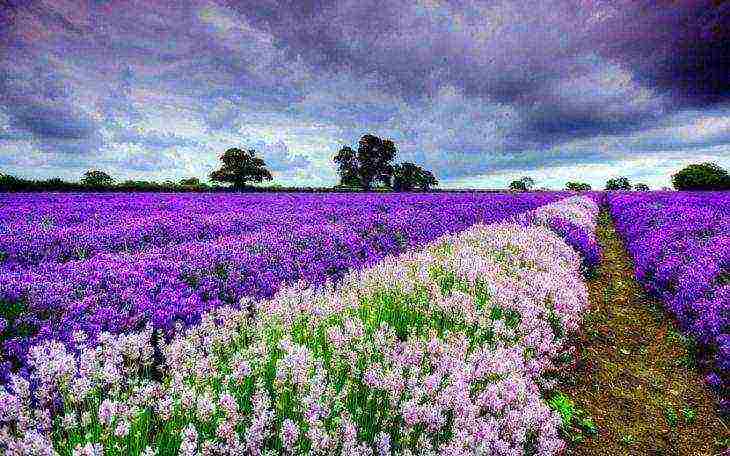

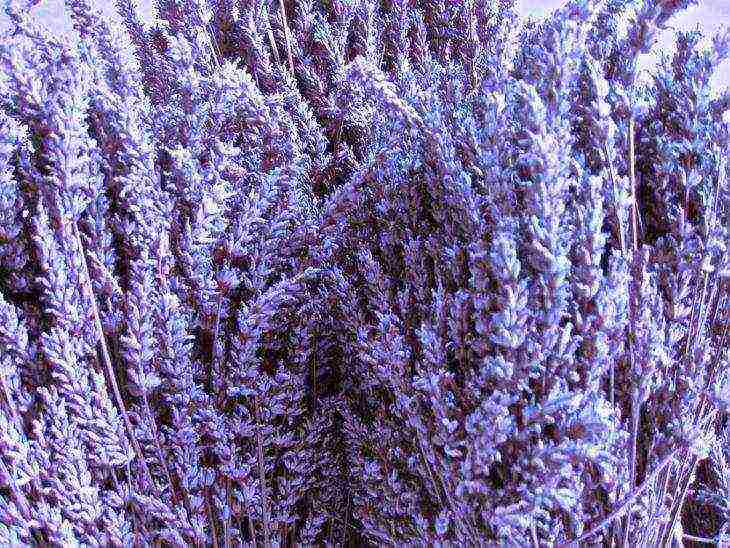
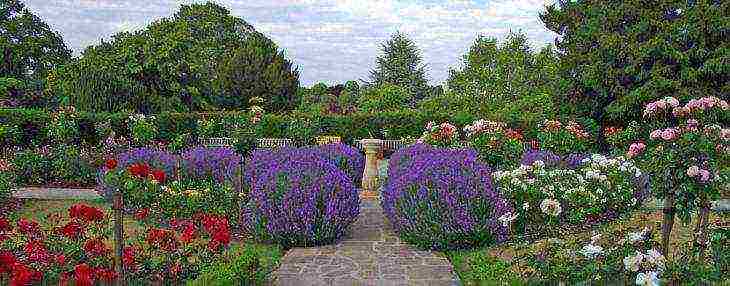
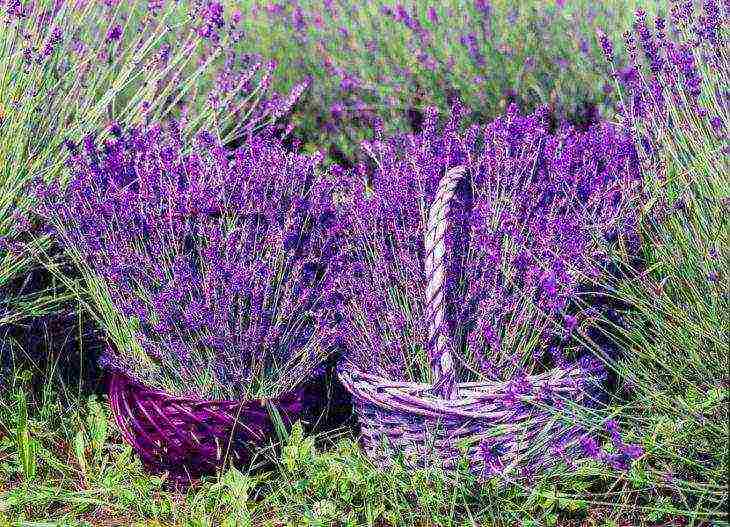
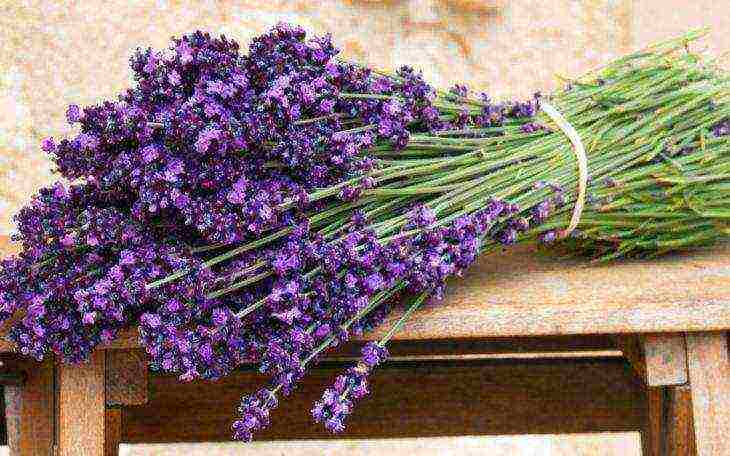
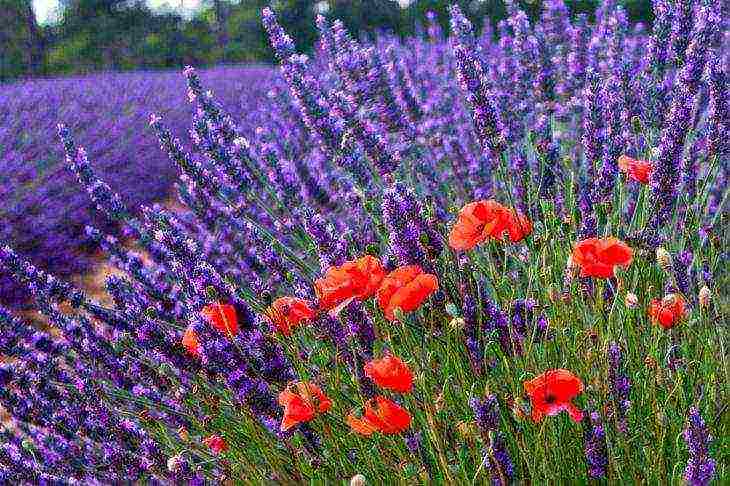

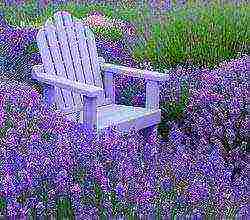 It is impossible to walk past the area where lavender grows. And the point is not even in the luxurious lilac bushes, but in the enchanting aroma that they spray around the neighborhood. And for a minute, frozen near this magic, you are already rushing home at full speed, elated. You need to find out as soon as possible: how capricious lavender plant is, are planting and care difficult, what is it sick of? After all, the fact that from now on she will be in your garden is a question that has already been resolved.
It is impossible to walk past the area where lavender grows. And the point is not even in the luxurious lilac bushes, but in the enchanting aroma that they spray around the neighborhood. And for a minute, frozen near this magic, you are already rushing home at full speed, elated. You need to find out as soon as possible: how capricious lavender plant is, are planting and care difficult, what is it sick of? After all, the fact that from now on she will be in your garden is a question that has already been resolved.
Description: varieties and varieties of lavender
Lavender is an evergreen, rather unpretentious plant widely used in cosmetology and medicine. The scent of lavender has a calming effect and helps relieve headaches. But not only medicinal properties are appreciated in lavender. It is widely used in perfumery and cosmetology. Lavender and cooking did not pass by, because this plant has a specific spicy taste. And in everyday life, dried lavender twigs are used as a reliable remedy for moths.
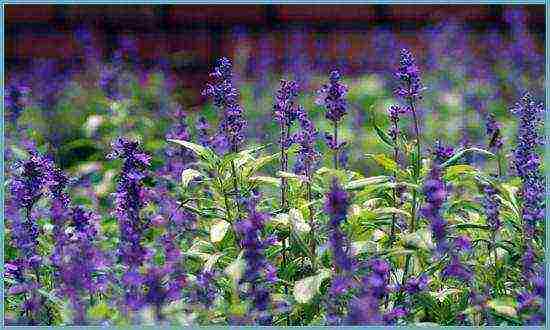
There are many varieties of lavender. Which one to plant in your garden - choose according to your taste
More than 25 types of lavender are known, but several varieties are most popular in the garden culture.
Narrow-leaved lavender (English). It is a bush no more than a meter in diameter. The leaves of this variety are medium-sized, narrow, gray-green. Blooms in June and July. The variety is unpretentious and tolerates low temperatures well.
Broadleaf lavender (French). This lavender variety is considered the ancestor of the decorative varieties. It differs from other varieties in a wide color range of inflorescences, as well as a very strong and not always pleasant aroma.
Hybrid lavender (Dutch).This variety is considered the largest. Its bushes can grow up to two meters. It is a natural hybrid of narrow-leaved and broad-leaved varieties. Blooms in July. Its frost resistance is lower than that of narrow-leaved. Refers to industrial grades.
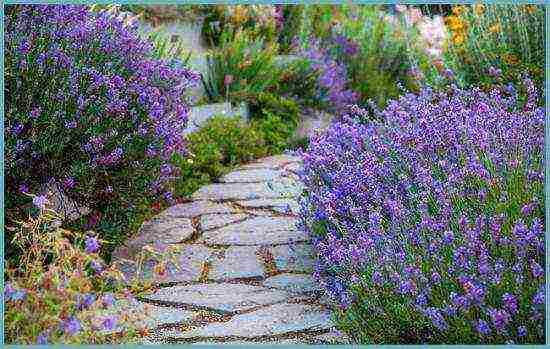
Dutch lavender has the most beautiful flowers
Lavender toothed. One of the most thermophilic varieties. Prefers to grow indoors rather than outdoors. It is the owner of soft silvery leaves and inflorescences of large flowers in all shades of purple.
Planting a plant
Lavender can be propagated in different ways: cuttings, dividing the bush, layering, seeds. Lavender seeds can survive for many years if you follow the rule: store them in sealed containers.
Attention! Lavender seeds need to undergo preliminary processing - stratification. For this, the seeds must be kept at a temperature of +5 ° C for at least two months. Most often, for this purpose, the seeds are mixed into wet sand and placed in a refrigerator.
Lavender seeds can be sown directly outdoors, but certain requirements must be followed.

Lavender seeds
The best time to plant lavender outdoors is October. It is sown to a depth of no more than 4 mm, the soil must be slightly compacted. If the weather is dry, then the seeds can be watered. In winter, the area sown with lavender should be covered with snow as much as possible.
In open ground, you can sow seeds in the spring. To do this, first, in March, you need to remove the seeds in the refrigerator for stratification, and in May sow in open ground in a previously prepared place.
Advice. Choose a place for lavender in a dry and sunny area. This flower does not like waterlogging.
Lavender care
Water the lavender only when the soil is dry. Excessive moisture leads to root decay, but it is not recommended to dry out lavender either.
In autumn and spring, shrubs need to be hilled, and cutting lavender significantly extends the life of the plant. A small pruning can be done immediately after the lavender has faded, but a more significant shortening should be done only at the end of autumn, leaving up to 4-5 new green shoots.
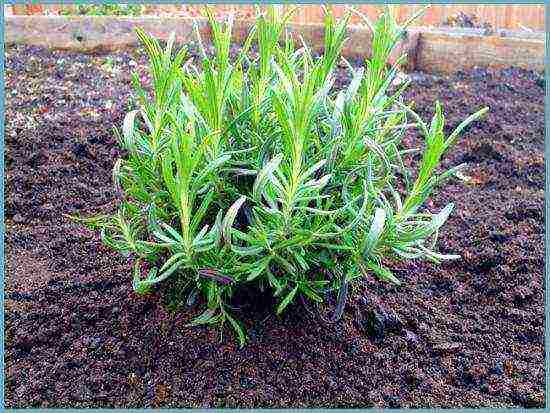
Prune the bushes - this will not only give them a more decorative look, but also benefit the plant.
If your lavender will be hibernating outdoors where temperatures drop below -25 degrees, provide a warm shelter. To do this, it will be enough to cut the bushes before wintering and cover them with branches of coniferous trees.
Attention! Covering lavender with foliage, as is usually done to protect plants from freezing, should not be, this may result in plant decay.
Fertilizing and feeding lavender
In spring, it is recommended to feed lavender with nitrogen fertilizers. To do this, you need to dilute 1 tbsp. l. urea or 2 tbsp. l. "Sodium humate" for 10 liters of water. The consumption of such a solution for 1 bush should be no more than 5 - 6 liters.
At the beginning of flowering, lavender can be fed with a fertilizer solution "Agricola-Fantasy" (it is diluted in a proportion of 2 tablespoons per 10 liters of water). The consumption of this solution is 3-4 liters per one bush.
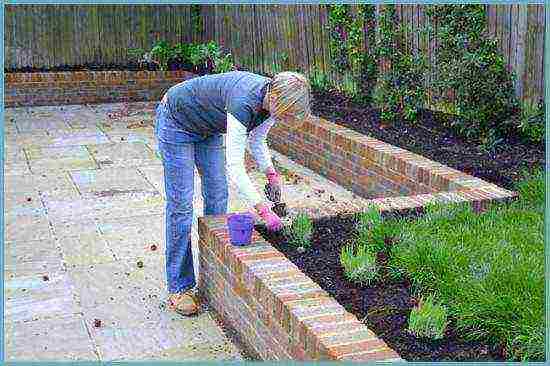
To make lavender bloom better - feed the plant with mineral fertilizers
Instead of Agricola, a solution of organic fertilizer Rossa Universal is also used, dissolving 2 tbsp. spoons in 10 liters of water. And the third option for feeding: 2 tbsp. l. dilute nitrophosphate and half a liter of liquid mullein in 10 liters of water. The consumption of the last two solutions is 10 liters per bush.
Plant propagation
Lavender is propagated by division, cuttings or layering.
Reproduction by division perhaps when there are already lavender bushes on the site. In summer, lavender produces a lot of young growth. It is something that can be rooted. To do this, you need to cut the plant and huddle in such a way that all the free space between the stems is densely filled with earth. And by the fall, the bush can be divided.
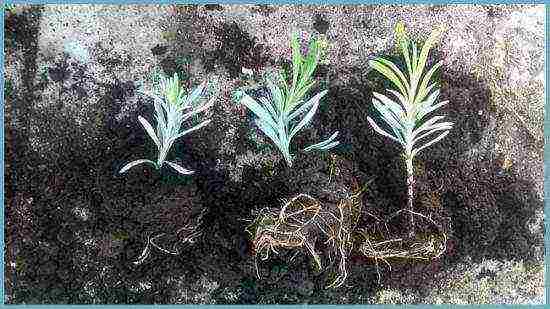
Dividing the lavender bush
The most suitable way to propagate home-grown lavender is propagation by cuttings... To do this, lignified annual shoots should be divided into cuttings no more than 10 cm and root.
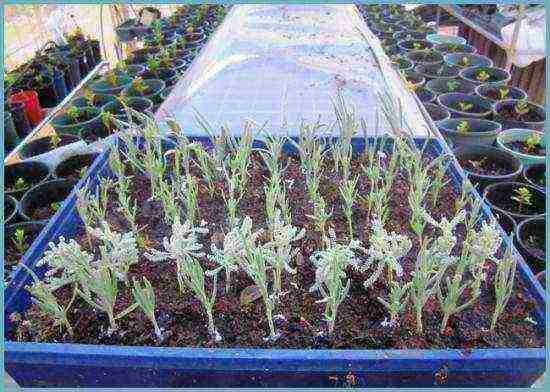
Propagation of lavender by layering
The easiest breeding method, which is suitable even for novice gardeners, is reproduction by layering... With this method, in the spring, 2-3 shoots are carefully folded back and placed in a groove 3-5 cm deep, fixed, sprinkled with earth and watered. These shoots need to be watered a little more abundantly in order for the formation of lateral roots to occur successfully. After a year, the shoots are already completely independent, and you can plant them from the mother bush.
Diseases and pests
Lavender is not very susceptible to diseases, and parasites attack it infrequently, but this does not mean that nothing like this can happen. Of the diseases, gray rot is most common. Caring for a diseased plant consists in cutting off the damaged parts. The cut off parts must be burned.
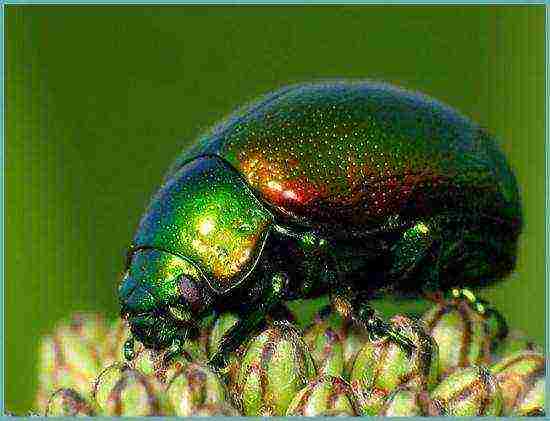
Monitor plant health and remove insects
Of the garden pests on lavender, you can find the rainbow beetle eating leaves. You need to collect it from plants by hand. But more often lavender is subject to the dominance of pennies, which do not cause any damage to the plant, but spoil the appearance pretty much, because they cover their larvae with a layer of white foam, which looks very much like saliva. Caring for lavender that has been attacked by pennies is very simple. It is enough to rinse off the foam with a stream of water.
Lavender: Combination with other plants
It is known that smells have a great influence on a person's subconsciousness. Therefore, when growing flowers, it is important that the flower bed not only pleases the eye, but also enchants with its aroma. When planting plants, it is important to take care not only that the appearance of the flowers complements each other, but also that the floral aromas do not mix. This means that you will have to carefully consider the selection of flowers that you want to plant, otherwise you will hardly be able to rest or recharge in your garden.
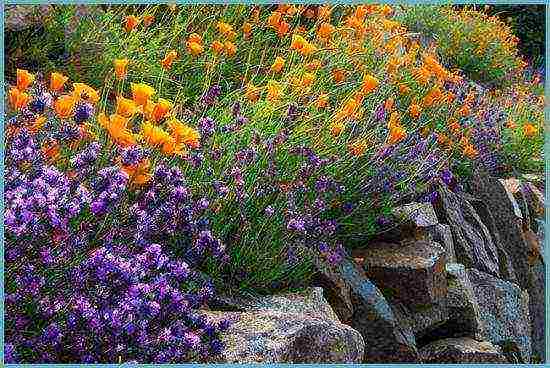
Lavender looks very good next to plants with contrasting colors.
Lavender goes very well with sage and catnip. She also looks amazing next to yarrow and garden hydrangea, liatrix, or surrounded by grown herbs and perennials.
Lavender in landscape design
Lavender, planting and caring for which is so easy that any novice gardener can handle it, is ideal for decorating the territory. A significant advantage of lavender among other landscaping plants gives a bright and intense color in various shades, from pale pink to bright lilac. This makes it possible to accentuate the grace of any corner of your garden.
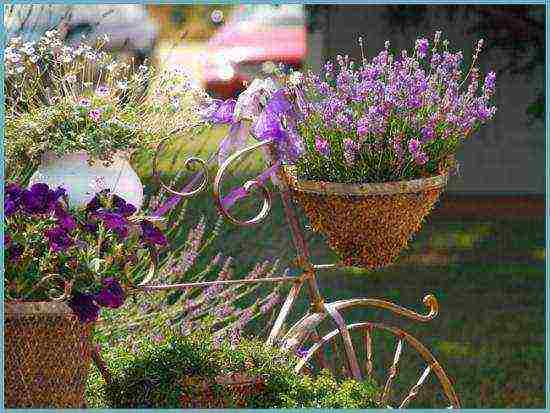
Lavender in landscape design
Advice. Use decorative designs to highlight the originality of your flower garden.
There are several options for decorating your garden with these flowering shrubs.
- Perhaps the most well-known and common way is to plant lavender along paths and sidewalks. This design of your site makes it possible to visually limit, as well as create a clear division of the garden into zones.
- The second option is to plant the bushes in such a way that the lavender will grow in accordance with the order of the cells on the chessboard. But this type of landing will only work on a completely horizontal surface.
- Another unusual way to emphasize the originality of a garden plot or flower garden is to form a "carpet" of these shrubs. If you decide to choose this option, you need to immediately determine the height of the lavender and regularly cut it at this level in the same plane. Such a carpet will not become a semblance of a soft grassy one on which you can comfortably sit, but planting shrubs in this way will allow lavender to brilliantly show its color.

Lavender is often planted along paths and fences.
Of course, lavender in landscape design is not as common as planting roses or all kinds of loaches, but this is what will emphasize the uniqueness and originality of the decorative design of your garden.
Growing lavender is the perfect way to highlight your garden or flower garden with color, shape, and an elegant scent that will impress everyone who walks by.
How to plant lavender correctly: video
Lavender in the garden: photo
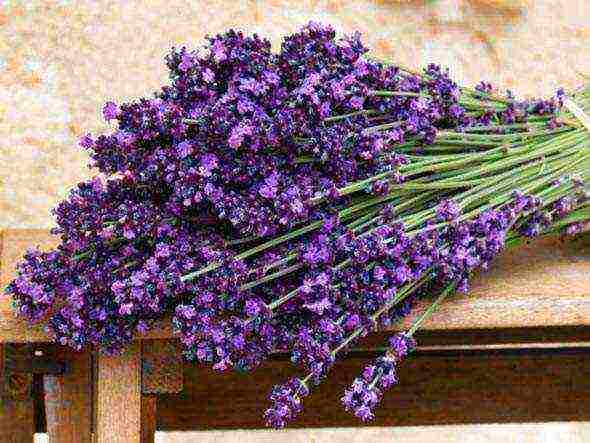
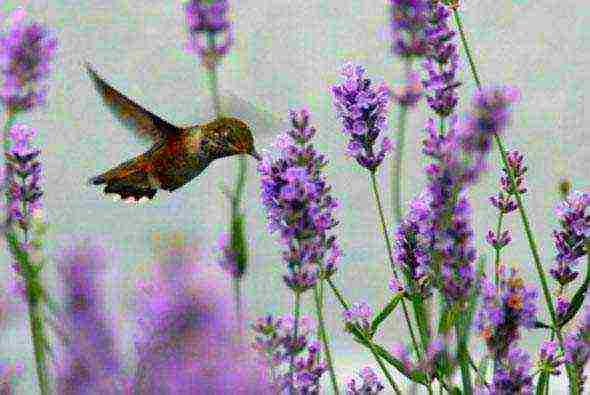

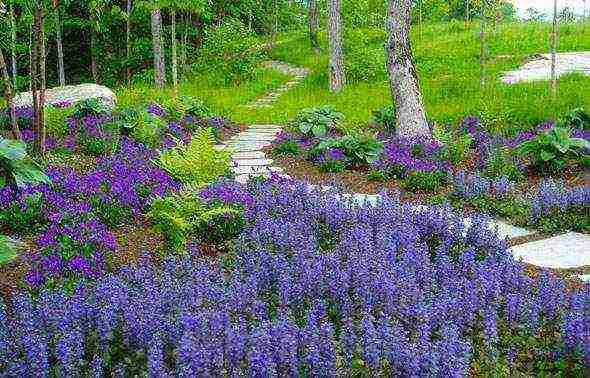
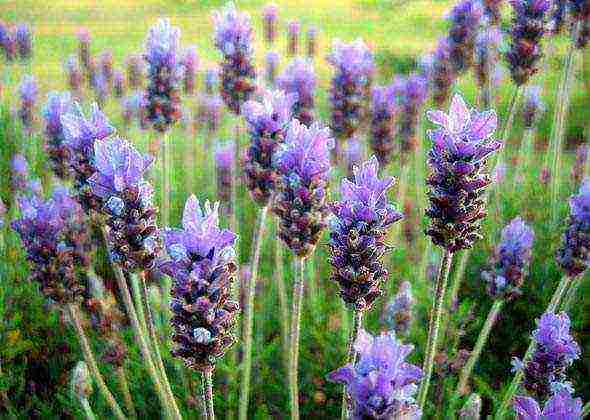
The world of flora is surprisingly diverse and varied. It combines with amazing organicity a variety of plants and many varieties of even the same crops. Lavender deserves special attention, which is represented by three dozen species. In nature, this bright bush can be found in Australia, India, the Canary Islands, Arabia, southern Europe, North and East Africa. The simple planting and maintenance of lavender makes it very attractive to a huge number of growers.
Varieties of lavender and their features
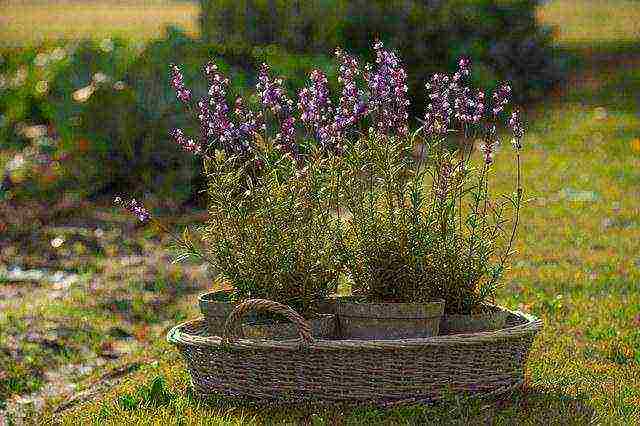 All lavender is usually divided into three groups. These are narrow-leaved, French (broadleaf), and English (medicinal) varieties. Each of them has certain characteristics. For example, English lavender is distinguished by elongated spikelets-inflorescences and miniature leaf plates. This type is used most widely throughout the world. The varieties of this "block" can be freely grown in the middle lane. The plant tolerates wintering in this region without problems. Read the article on the jasmine bush.
All lavender is usually divided into three groups. These are narrow-leaved, French (broadleaf), and English (medicinal) varieties. Each of them has certain characteristics. For example, English lavender is distinguished by elongated spikelets-inflorescences and miniature leaf plates. This type is used most widely throughout the world. The varieties of this "block" can be freely grown in the middle lane. The plant tolerates wintering in this region without problems. Read the article on the jasmine bush.
French kind of lavender
French lavender is no less common in the garden: planting and caring for this crop is not particularly difficult. However, it should be borne in mind that, in comparison with the previous version, this variety is more fastidious and capricious. Visually, the broadleaf group practically does not differ from the English variety. But often its inflorescences are somewhat shorter.
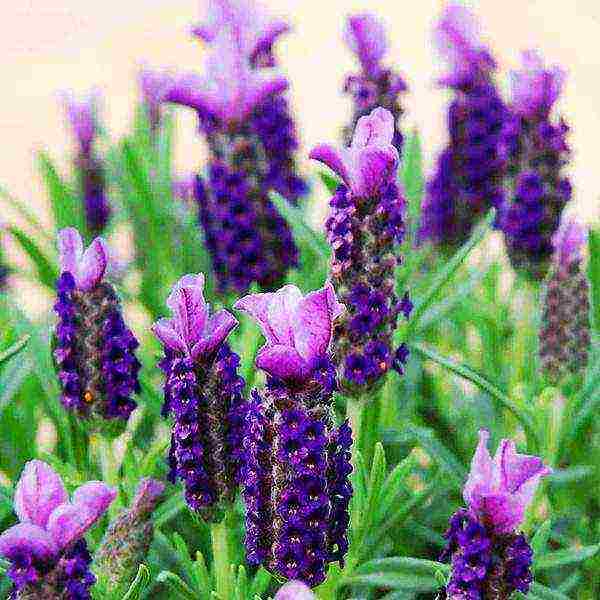 Most often, it is French lavender that is grown on the balcony: planting and caring for this potted crop has certain characteristics, but in general there are no problems here. The plant is characterized by amazingly beautiful flowers. The spectrum of their shades is strikingly wide and includes such paints as:
Most often, it is French lavender that is grown on the balcony: planting and caring for this potted crop has certain characteristics, but in general there are no problems here. The plant is characterized by amazingly beautiful flowers. The spectrum of their shades is strikingly wide and includes such paints as:
- pink;
- lilac;
- green;
- burgundy;
- purple;
- white.
The attractiveness of this variety lies in the fact that it begins to bloom much earlier than its other "congeners". Already in April and May, this lavender begins to scent. For the summer, you can take the plant out into the garden.
Features of the narrow-leaved variety
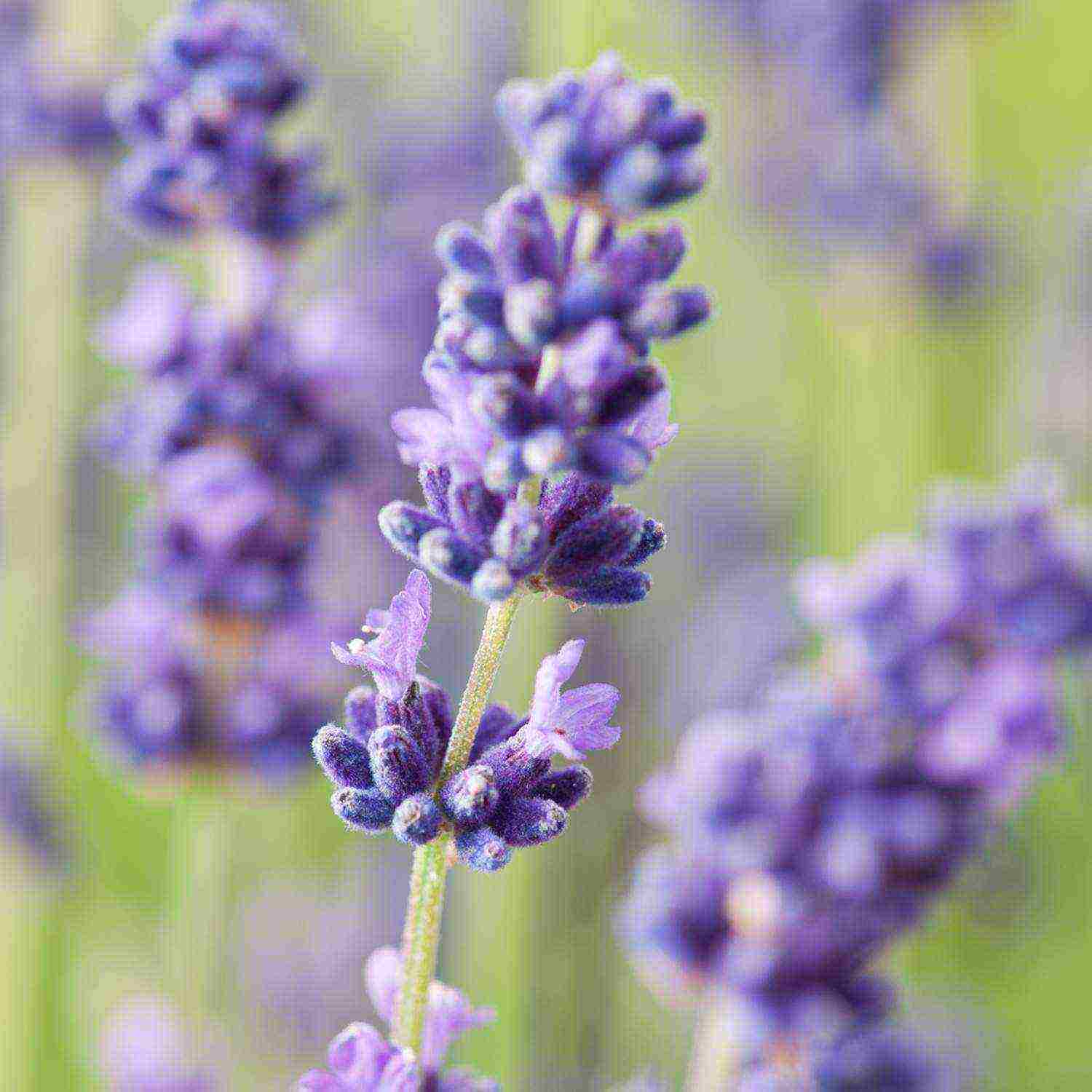 It is impossible not to make a reservation that there is a lavender Angustifolia (Lavandulaangustifolia). This is a narrow-leaved variant, which is essentially a perennial evergreen dwarf shrub. The flower is quite unpretentious. It is hardy, which allows it to be actively cultivated in various regions. Moreover, this option can be cultivated in pots or tubs, which are cleaned into the house for the winter. For flower growers, this lavender has a special value.
It is impossible not to make a reservation that there is a lavender Angustifolia (Lavandulaangustifolia). This is a narrow-leaved variant, which is essentially a perennial evergreen dwarf shrub. The flower is quite unpretentious. It is hardy, which allows it to be actively cultivated in various regions. Moreover, this option can be cultivated in pots or tubs, which are cleaned into the house for the winter. For flower growers, this lavender has a special value.
Among other features of this culture, it is worth noting the absence of a central stem. The bush is represented by a combination of several shoots. Sometimes their number reaches 400. Narrow-leaved lavender has a lot of features: planting and caring for this plant is also characterized by a number of nuances. The root system of the flower is superficial. It is located very close to the top of the ground. It can be called highly branched, dense and rather rough. The leaf plates of this group of lavender are elongated and narrow. They are a rich green hue. The edges of the leaves are slightly bent.
Lavender Manstead
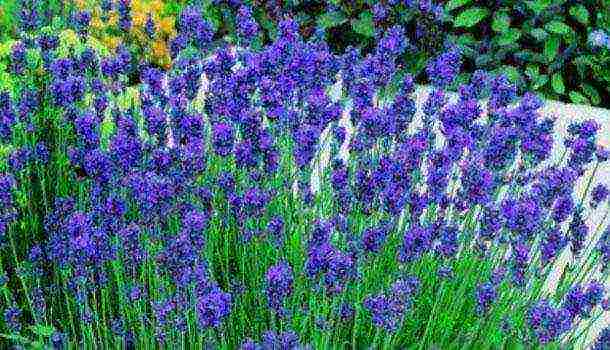 The original Manstead lavender is another member of this group. This variety is considered narrow-leaved. This culture blooms in July and August.A perennial, forming in the form of a semi-shrub, is distinguished by the presence of a fibrous and woody root, numerous shoots, linear and opposite leaves. The shade of the plates is greenish-silver with gray tints. Plus, they have a gentle and light pubescence. The height of the grass reaches 60 cm. In this culture, blue or bluish-lilac buds are formed, collected in spike-shaped inflorescences.
The original Manstead lavender is another member of this group. This variety is considered narrow-leaved. This culture blooms in July and August.A perennial, forming in the form of a semi-shrub, is distinguished by the presence of a fibrous and woody root, numerous shoots, linear and opposite leaves. The shade of the plates is greenish-silver with gray tints. Plus, they have a gentle and light pubescence. The height of the grass reaches 60 cm. In this culture, blue or bluish-lilac buds are formed, collected in spike-shaped inflorescences.
Lavender Yuzhanka
This group includes other varieties, for example, narrow-leaved lavender Yuzhanka, which requires the creation of certain conditions for successful cultivation. As for the description of the culture, this variety is notable for its low height. Usually, a perennial does not grow taller than 60 cm.
The attractiveness of the plant lies in the fact that it thinns the exquisite aroma.
Lavender Southerner is very popular: planting and caring for this plant has a number of features. So, it is recommended to plant grass in sunny areas that are well protected from winds and drafts. The flower prefers light soils. 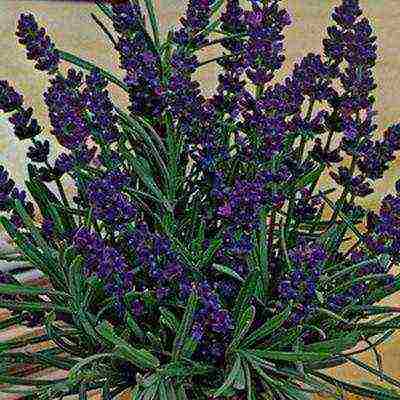 But the main requirement of Yuzhanka is to obtain a sufficient amount of ultraviolet radiation. In order for the variety to actively develop and bloom, the duration of daylight hours must be at least 6 hours.
But the main requirement of Yuzhanka is to obtain a sufficient amount of ultraviolet radiation. In order for the variety to actively develop and bloom, the duration of daylight hours must be at least 6 hours.
Southern lavender is not only included in the group of narrow-leaved varieties. Among other representatives of this species, it is worth noting varieties:
- Ellagance;
- Rosea;
- Munsted;
- Hidcote;
- Steppe;
- Alba;
- Record, etc.
Lavender Voznesenskaya 34
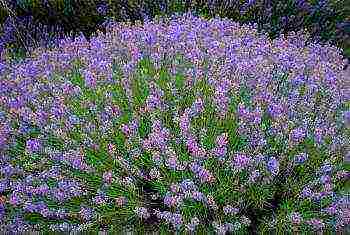 Among other plants of this species, Voznesenskaya 34 narrow-leaved lavender deserves attention, since it is widely used in folk medicine. The plant allows you to cheer up and relieve emotional overload. This fragrant perennial has melliferous and spicy-aromatic properties. The flower is medicinal, which is proven by its antispasmodic and antiseptic properties. The variety, represented by a spherical bush with lilac-purple inflorescences, is used for therapeutic baths, improving appetite, with neuralgia and bronchitis.
Among other plants of this species, Voznesenskaya 34 narrow-leaved lavender deserves attention, since it is widely used in folk medicine. The plant allows you to cheer up and relieve emotional overload. This fragrant perennial has melliferous and spicy-aromatic properties. The flower is medicinal, which is proven by its antispasmodic and antiseptic properties. The variety, represented by a spherical bush with lilac-purple inflorescences, is used for therapeutic baths, improving appetite, with neuralgia and bronchitis.
A variety of varieties and the most beautiful options
It is worth understanding the variability of this plant and the characteristics of its various varieties. Lavender Blue Space deserves special attention, which is distinguished not only by its attractive appearance, but also has healing properties. 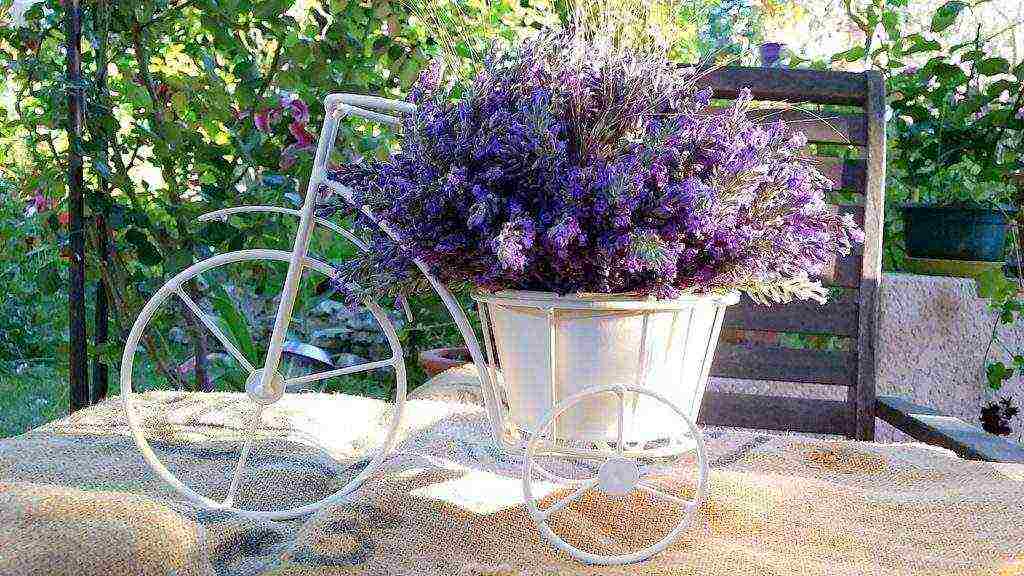 It is a perennial herb. The height of these flowers varies from 30 to 35 cm. Their stems are branched. The attractiveness of this look is that it is suitable for:
It is a perennial herb. The height of these flowers varies from 30 to 35 cm. Their stems are branched. The attractiveness of this look is that it is suitable for:
- cuts for summer bouquets;
- decoration of winter flower arrangements;
- decorating plots.
Plus, the Blue Space is an excellent natural antiseptic. The herb is prescribed for neurasthenia and headache. This lavender is grown from seeds: planting and flower care are standard.
Lavender Butterfly and Victory
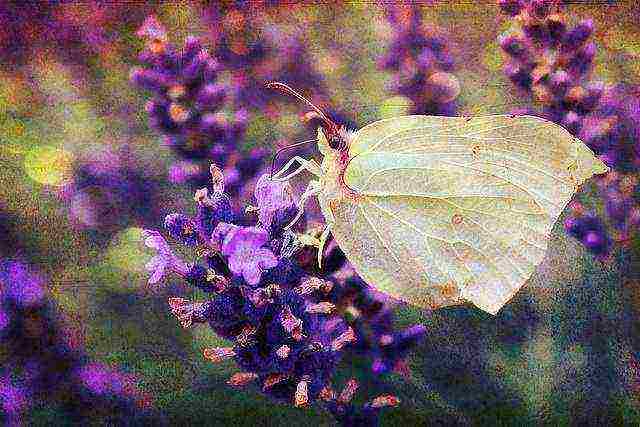 Another common solution is Butterfly lavender, which is known to flower growers for its original appearance. Fragrant flowers visually resemble butterflies. The height of this shrub is 30 cm. This plant begins to bloom very early. Already in mid-April, buds are formed, which persist until July, and in the second half of summer, a second flowering may begin.
Another common solution is Butterfly lavender, which is known to flower growers for its original appearance. Fragrant flowers visually resemble butterflies. The height of this shrub is 30 cm. This plant begins to bloom very early. Already in mid-April, buds are formed, which persist until July, and in the second half of summer, a second flowering may begin.
Another popular solution is Victory lavender, an essential oil-type perennial. It can grow up to 1 meter. The bush is fairly sprawling. Lanceolate-type sheet plates are formed on it. Their grayish hue goes well with unusual flowers in the lilac spectrum. The attractiveness of this variety lies in its rich and fairly persistent aroma. Plus Victory is not afraid of frost and drought.
Lavender Delight
Lavender Delight deserves special attention, which has some attractive features. This is a fragrant and very beautiful evergreen type plant.The perennial grows up to 60 cm in height. This is a subshrub, which by its nature is a wonderful honey plant. The bush itself is compact and highly branched. The plant blooms in late July.
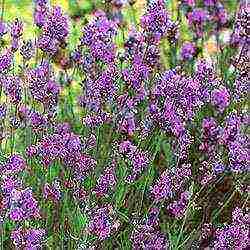 The flower feels best in sunny and fairly dry areas. Lavender is planted with seeds: the cultivation and care of this variety is based on the basic requirements of the crop. This type of lavender can be used as:
The flower feels best in sunny and fairly dry areas. Lavender is planted with seeds: the cultivation and care of this variety is based on the basic requirements of the crop. This type of lavender can be used as:
- soothing composition;
- seasoning;
- remedy for moths;
- an element of a perfume composition;
- choleretic drug;
- remedy for neuralgia and rheumatic pains.
Lavender Mini Blue and Hydcote
 Another option is Mini Blue lavender with blue inflorescences. The height of the bush does not exceed 30 cm. The perennial type semi-shrub is distinguished by the presence of linear and opposite leaves. This plant is grown in fresh and dry soil. The soil should be sandy-clayey, gravel and moisture permeable. It is great if the substrate contains lime and nutrients in moderation. The grass grows well and develops in warm, sunny and even hot places. But this variety is quite sensitive to frost.
Another option is Mini Blue lavender with blue inflorescences. The height of the bush does not exceed 30 cm. The perennial type semi-shrub is distinguished by the presence of linear and opposite leaves. This plant is grown in fresh and dry soil. The soil should be sandy-clayey, gravel and moisture permeable. It is great if the substrate contains lime and nutrients in moderation. The grass grows well and develops in warm, sunny and even hot places. But this variety is quite sensitive to frost.
Another variety is Lavender Hydcote: planting and caring for this narrow-leaved version is inherently no different from the cultivation of other similar herbs. Hydcote Blue is a compact variety. This perennial is grown as a framing element of plant compositions. It looks no less refined and elegant along the paths. The attractiveness of this variety lies in its unique decorative properties. Even Hydcot's leaf plates have a greenish-silver tint. Bluish buds form in mid-summer and thin out the rich aroma.
Some features of growing lavender
Any perennial lavender is grown quite simply: planting and caring for it is nothing extremely difficult, the main thing is to plant the plant correctly.
This process is quite responsible. It is better not to move adults from place to place, since they do not tolerate a change of site extremely badly. If you have to do this, then it is worth replanting the grass with a large earthy clod. It is recommended to leave enough space between adjacent plants, and the spacing should be approximately equal. This will allow you to achieve a splendid and slim fit.
Planting lavender on the site
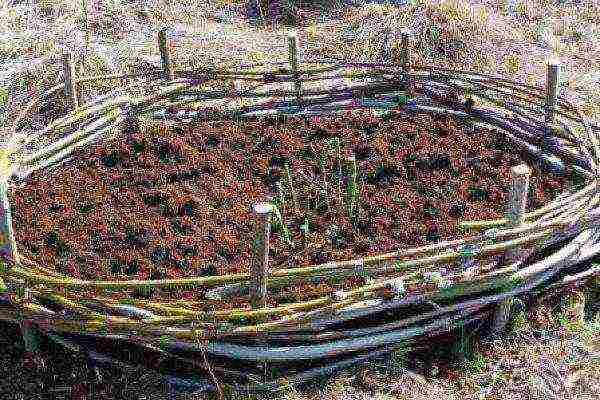 Among other features of this process, it is worth noting the possibility of planting a culture not only with seeds, but also with cuttings. Moreover, the second option is preferable, since in this case the flowers root better. The algorithm for performing the work is extremely simple. The bushes only need to be deepened into the loose soil by a couple of centimeters. Then they are covered with foil. They need to be watered systematically. Rooted specimens are transplanted to the desired site.
Among other features of this process, it is worth noting the possibility of planting a culture not only with seeds, but also with cuttings. Moreover, the second option is preferable, since in this case the flowers root better. The algorithm for performing the work is extremely simple. The bushes only need to be deepened into the loose soil by a couple of centimeters. Then they are covered with foil. They need to be watered systematically. Rooted specimens are transplanted to the desired site.
Ground requirements
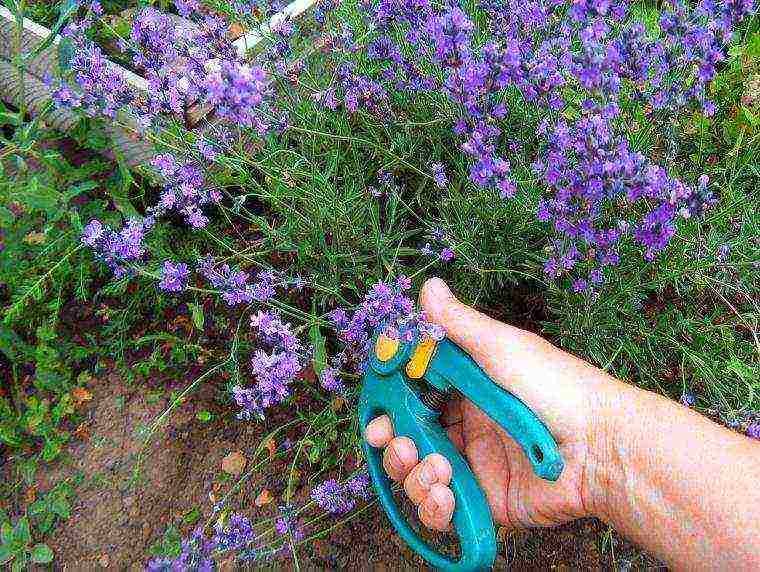 Garden lavender does not cause difficulties in cultivation: planting and caring for it means watering, fertilizing, loosening, weeding. The flower does not like dense soils, since the root system of the plant is demanding on high-quality air circulation. Weeding and loosening should be done regularly. You can also form a dense layer of mulch. To do this, use multi-colored decorative substrates or decayed foliage. The main thing is to leave open the ground near the base of the trunk to prevent rotting.
Garden lavender does not cause difficulties in cultivation: planting and caring for it means watering, fertilizing, loosening, weeding. The flower does not like dense soils, since the root system of the plant is demanding on high-quality air circulation. Weeding and loosening should be done regularly. You can also form a dense layer of mulch. To do this, use multi-colored decorative substrates or decayed foliage. The main thing is to leave open the ground near the base of the trunk to prevent rotting.
Lavender watering rules
 Lavender is also demanding for other factors: planting and caring for this flower at home requires high-quality watering and timely fertilization. Carefully irrigate the soil near this flower. Do not pour lavender, as otherwise, root decay may begin. For the same reason, the aerial part of the perennial may turn yellow.But do not allow the flower to dry out either. Deficiency of moisture will prevent lavender from being lush and voluminous. We recommend viewing the article: Camellia flower: keeping in the garden and at home.
Lavender is also demanding for other factors: planting and caring for this flower at home requires high-quality watering and timely fertilization. Carefully irrigate the soil near this flower. Do not pour lavender, as otherwise, root decay may begin. For the same reason, the aerial part of the perennial may turn yellow.But do not allow the flower to dry out either. Deficiency of moisture will prevent lavender from being lush and voluminous. We recommend viewing the article: Camellia flower: keeping in the garden and at home.
